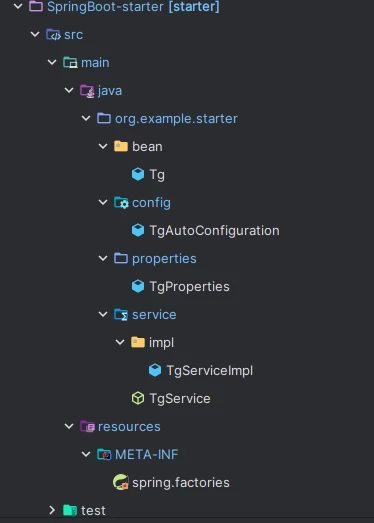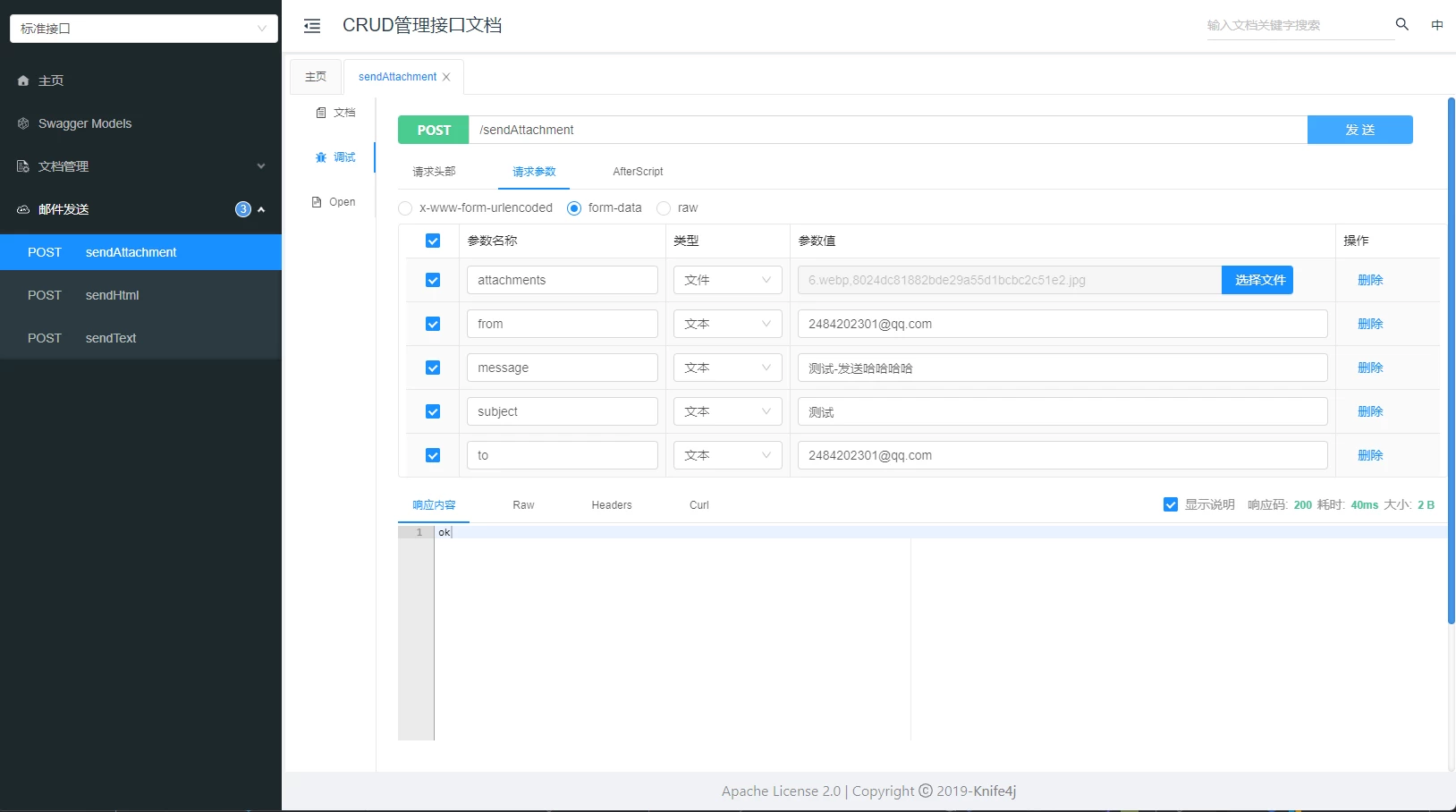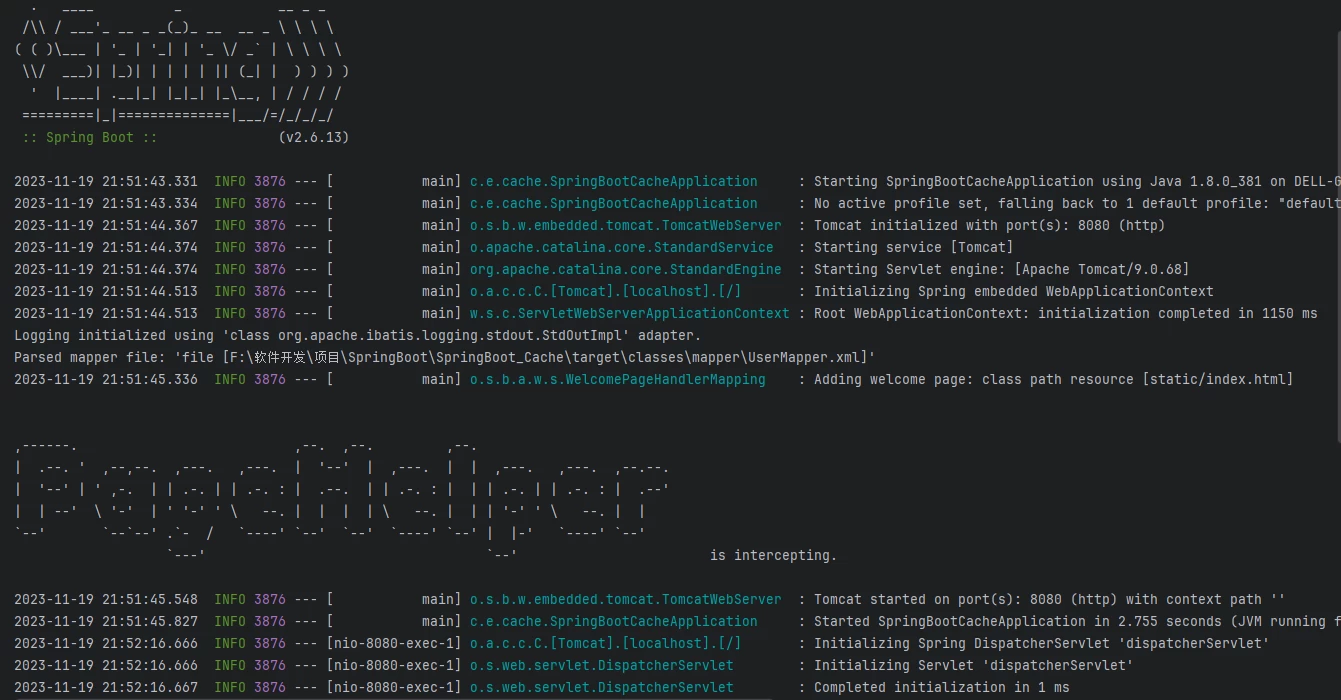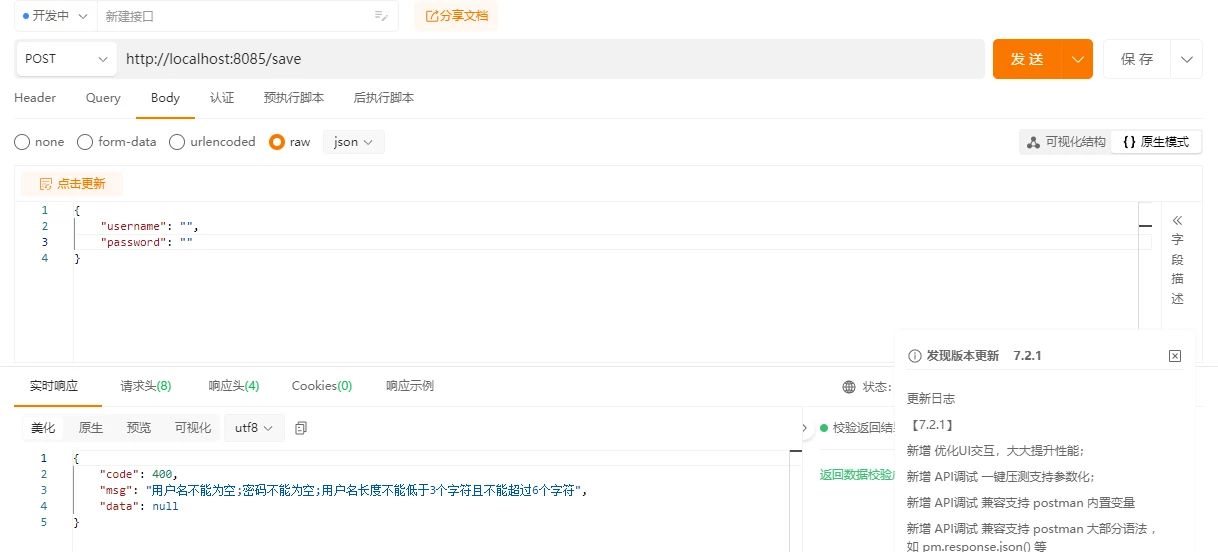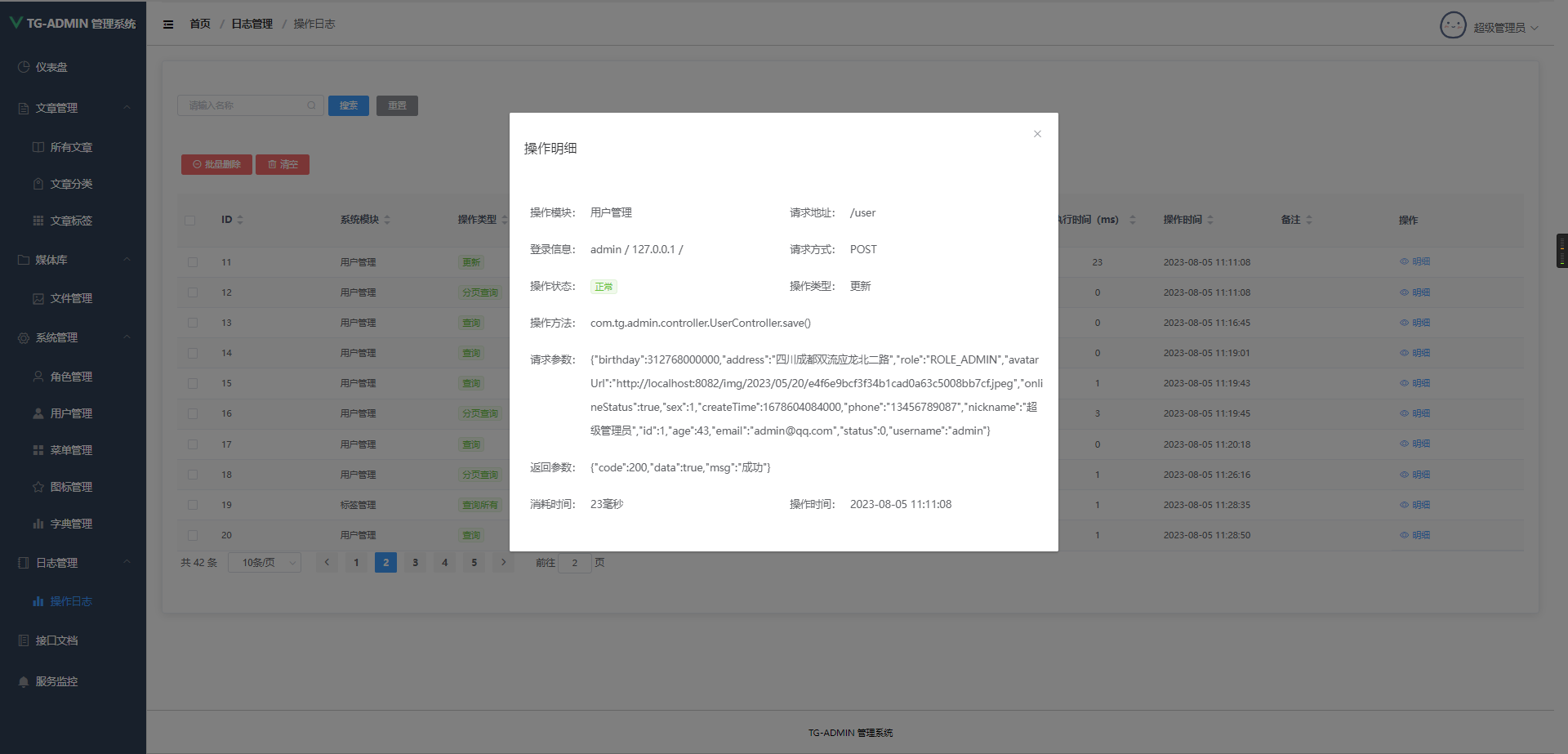SpringBoot整合RabbitMQ实现消息的消息消费
什么是RabbitMQ?
是由erlang语言开发,基于AMQP(Advanced Message Queue 高级消息队列协议)协议实现的消息队列,它是一种应用程序之间的通信方法,消息队列在分布式系统开发中应用非常广泛。支持Windows、Linux/Unix、MAC OS X操作系统和包括JAVA在内的多种编程语言。
组成部分
- Broker:消息服务进程包含Exchange和Queue两个部分
- Exchange:消息队列交换机,按一定的规则将消息路由转发到某个队列,对消息进行过虑。
- Direct Exchange(point-to-point):直接交换器,生产者将消息丢给它后,它从与自己绑定的那些Queue里选择一个,然后直接将消息丢过去,其他的Queue就接不到这个消息了。
- Fanout Exchange(multicast):广播交换机,生产者将消息发送给所有的Queue。
- Topic Exchange(publish-subscribe): 主题交换器,生产者将消息丢给它后,它就给与自己绑定的那些个关心这个消息Queue全部发送一份消息。 也就是发布-订阅模式。
- Queue:消息队列,存储消息的队列,消息到达队列并转发给指定的
- RoutingKey路由key:用来控制交换器如何将消息发送给绑定的队列。
- Exchange:消息队列交换机,按一定的规则将消息路由转发到某个队列,对消息进行过虑。
- Producer:消息生产者,即生产方客户端,生产方客户端将消息发送
- Consumer:消息消费者,即消费方客户端,接收MQ转发的消息。
工作原理

生产者发送消息:
- 生产者和Broker进程建立TCP连接
- 生产者和Broker进程建立通道
-
生产者通过Channel信道将消息发送给Broker,由Exchange将消息进行转发
-
Exchange将消息转发给指定的Queue
消费者消费消息:
- 消费者和Broker进程建立TCP连接
- 消费者和Broker进程建立通道
- 消费者监听指定的Queue
- 当有消息到达Queue时Broker默认将消息推送给消费者
安装
配置RabbitMQ 的系统环境,安装erlang
配置环境变量
ERLANG_HOME = "安装路径"
path = “%ERLANG_HOME%/bin”输入erl 检查是否安装成功如下图:

安装RabbitMQ

安装好以后,配置环境变量
RABBITMQ_HOME = "安装路径"
path = “%RABBITMQ_HOME%/sbin”运行 cmd 命令 输入 rabbitmq-server 启动成功,如下图:

访问 http://localhost:15672
 输入用户名和密码,默认都是guest
输入用户名和密码,默认都是guest

好了接下来我们开始整合!!!
案例代码
搭建一个SpringBoot项目选择好rabbitmq
pom.xml
<?xml version="1.0" encoding="UTF-8"?>
<project xmlns="http://maven.apache.org/POM/4.0.0"
xmlns:xsi="http://www.w3.org/2001/XMLSchema-instance"
xsi:schemaLocation="http://maven.apache.org/POM/4.0.0 http://maven.apache.org/xsd/maven-4.0.0.xsd">
<modelVersion>4.0.0</modelVersion>
<parent>
<groupId>com.SpringBoot</groupId>
<artifactId>SpringBoot</artifactId>
<version>0.0.1-SNAPSHOT</version>
</parent>
<groupId>com.demo</groupId>
<artifactId>SpringBoot_RabbitMQ</artifactId>
<properties>
<maven.compiler.source>8</maven.compiler.source>
<maven.compiler.target>8</maven.compiler.target>
<project.build.sourceEncoding>UTF-8</project.build.sourceEncoding>
</properties>
<dependencies>
<dependency>
<groupId>org.springframework.boot</groupId>
<artifactId>spring-boot-starter-web</artifactId>
</dependency>
<dependency>
<groupId>org.springframework.boot</groupId>
<artifactId>spring-boot-starter-amqp</artifactId>
</dependency>
<dependency>
<groupId>org.springframework.boot</groupId>
<artifactId>spring-boot-starter-test</artifactId>
<scope>test</scope>
</dependency>
<dependency>
<groupId>org.projectlombok</groupId>
<artifactId>lombok</artifactId>
</dependency>
</dependencies>
</project>配置 application.yml
server:
port: 8080
spring:
rabbitmq:
host: 127.0.0.1
port: 5672
username: guest
password: guest
virtual-host: /创建MQ配置类
package com.demo.mq.config;
import org.springframework.amqp.core.Binding;
import org.springframework.amqp.core.BindingBuilder;
import org.springframework.amqp.core.DirectExchange;
import org.springframework.amqp.core.Queue;
import org.springframework.context.annotation.Bean;
import org.springframework.context.annotation.Configuration;
/**
* @Program: SpringBoot
* @ClassName RabbitMQConfig
* @Author: liutao
* @Description: 消息队列配置类
* @Create: 2023-07-09 19:26
* @Version 1.0
**/
@Configuration
public class RabbitMQConfig {
/**
* 消息队列名称
**/
public static final String QUEEN_NAME = "queue";
/**
* 交换机名称
**/
public static final String EXCHANGE_NAME = "exchange";
/**
* 路由key
**/
public static final String ROUTING_KEY = "key";
/**
* @MethodName: queue
* @description: 消息队列
* @UpdateTime: 2023/7/9 20:20
* @Return: org.springframework.amqp.core.Queue
**/
@Bean
public Queue queue() {
return new Queue(QUEEN_NAME);
}
/***
* @MethodName: exchange
* @description: 交换机
* @UpdateTime: 2023/7/9 20:19
* @Return: org.springframework.amqp.core.DirectExchange
**/
@Bean
public DirectExchange exchange() {
return new DirectExchange(EXCHANGE_NAME);
}
/**
* @MethodName: binding
* @description: 将消息队列 绑定到交换机
* @UpdateTime: 2023/7/9 20:18
* @Return: org.springframework.amqp.core.Binding
**/
@Bean
public Binding binding() {
return BindingBuilder
.bind(queue())
.to(exchange())
.with(ROUTING_KEY);
}
}
创建生产者类
package com.demo.mq;
import com.demo.mq.config.RabbitMQConfig;
import org.springframework.amqp.rabbit.core.RabbitTemplate;
import org.springframework.beans.factory.annotation.Autowired;
import org.springframework.stereotype.Component;
/**
* @Program: SpringBoot
* @ClassName Producer
* @Author: liutao
* @Description: 消息生产者
* @Create: 2023-07-09 19:51
* @Version 1.0
**/
@Component
public class Producer {
@Autowired
private RabbitTemplate rabbitTemplate;
public void sendMessage(String message) {
try {
rabbitTemplate.convertAndSend(RabbitMQConfig.EXCHANGE_NAME, RabbitMQConfig.ROUTING_KEY, message);
}catch (Exception e) {
throw new RuntimeException("消息发布异常");
}
}
}
创建消费者类
package com.demo.mq;
import lombok.extern.slf4j.Slf4j;
import org.springframework.amqp.rabbit.annotation.RabbitListener;
import org.springframework.stereotype.Component;
/**
* @Program: SpringBoot
* @ClassName Consumer
* @Author: liutao
* @Description: 消息消费者
* @Create: 2023-07-09 19:41
* @Version 1.0
**/
@Slf4j
@Component
public class Consumer {
@RabbitListener(queues = "queue")
public void receiveMessage(String message) {
// 处理接收到的消息
log.info("Received message:" + message);
}
}
web接口
package com.demo.mq.controller;
import com.demo.mq.Producer;
import org.springframework.beans.factory.annotation.Autowired;
import org.springframework.web.bind.annotation.GetMapping;
import org.springframework.web.bind.annotation.RestController;
/**
* @Program: SpringBoot
* @ClassName MqController
* @Author: liutao
* @Description: mq调用接口
* @Create: 2023-07-09 19:58
* @Version 1.0
**/
@RestController
public class MqController {
@Autowired
private Producer producer;
@GetMapping("/send")
public String send(String message){
producer.sendMessage(message);
return "ok";
}
}测试效果
启动服务 ,连接MQ成功

访问 http://localhost:8080/send?messgae="内容"


后台

一样我们也可以在mq管理面板去测试 找到 Queues 点击queue 进去


后台

结尾
到这里我们今天的SpringBoot就学习完了!!see you!!
如果我的内容对你有用,欢迎点赞,关注 !!涛哥博客
阅读剩余
版权声明:
作者:涛哥
链接:https://ltbk.net/back/spring_family/spring-boot/article/1592.html
文章版权归作者所有,未经允许请勿转载。
作者:涛哥
链接:https://ltbk.net/back/spring_family/spring-boot/article/1592.html
文章版权归作者所有,未经允许请勿转载。
THE END


